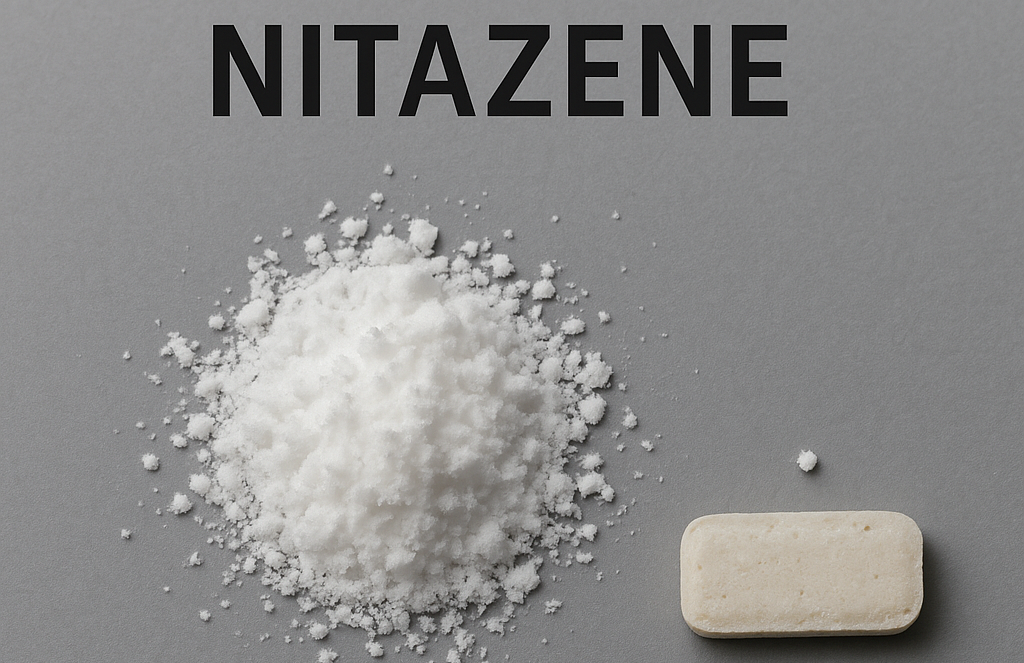
 Nitazene/ILLUSTRATION
Nitazene/ILLUSTRATION
Imagine this: a single grain of table salt weighs about 60 micrograms.
Now picture a substance so powerful that just two or three grains, invisible to the naked eye if mixed into powder, can cause a fatal overdose.
That’s the danger posed by a new drug, nitazenes.
According to the United Nations Office on Drugs and Crime (UNODC), nitazenes, originally synthesised in the 1950s but never approved for medical use, have rapidly entered illicit markets since 2019.
Some analogues, like isotonitazene and metonitazene, have been found to be 20 to 100 times stronger than fentanyl, making them exceptionally lethal even in minuscule doses.
“In 2023, ten synthetic opioids were reported for the first time to the UNODC EWA. Out of these, seven belonged to the group of nitazenes and three to fentanyl analogues,” a report by UNODC noted.
“In part of 2024, at least seven synthetic opioids were reported for the first six nitazenes desnitroclonitazene, fluetonitazene, fluetonitazepyne, isotonitazepyne, methylenedioxynitazene and N-desethyl protonitazene.”
In 2023, the UNODC noted growing concern over synthetic opioids, including nitazenes, being trafficked through African transit routes and appearing in illicit drug markets.
Though confirmed detections of nitazenes in East Africa remain limited, West African countries like Sierra Leone and Guinea-Bissau have already reported significant findings.
Laboratory tests in Sierra Leone revealed that over 80% of "kush" samples contained nitazenes, marking the first documented street-level presence of the substance on the continent.
Recent reports by The Wall Street Journal underscore the growing alarm over nitazenes—dubbed “Frankenstein opioids” for their synthetic complexity and unpredictable potency.
Unlike heroin, which is derived from natural opiates, and fentanyl, which is already 50 to 100 times more powerful than morphine, certain nitazene analogues such as isotonitazene and metonitazene have been found to be even more potent than fentanyl, by factors ranging from 2 to 10 times.
This means that doses as small as a few micrograms can be fatal.
The World Health Organisation (WHO) has thus raised concerns over their high abuse potential and the growing number of overdose deaths linked to nitazenes globally.
Unlike other opioids, nitazenes often go undetected in routine drug screenings, contributing to underreported fatalities and hampering timely response efforts.
The WHO Expert Committee on Drug Dependence recommended the urgent international scheduling of several nitazene compounds due to their clear public health risks.
In Kenya, national agencies have flagged the broader infiltration of novel psychoactive substances (NPS).
The National Authority for the Campaign Against Alcohol and Drug Abuse (NACADA) has identified an increase in synthetic opioid misuse, particularly among youth and in urban informal settlements.
In its 2022 and 2023 reports, NACADA warned of the growing threat posed by synthetic drugs whose composition is difficult to detect and whose effects are far more unpredictable than traditional narcotics.
These concerns have been echoed by the Ministry of Health, which has called for enhanced forensic testing capabilities and expanded harm reduction efforts, including increased access to naloxone, the drug used to reverse opioid overdoses.
Both NACADA and the Ministry have stressed the need for early warning systems, cross-border collaboration, and tighter regulation of precursor chemicals—many of which are trafficked through East Africa.
While nitazenes have caused a spike in overdose deaths in parts of Europe, North America, and West Africa, Kenya's current gap in surveillance and drug checking infrastructure places the country at risk of delayed response should these opioids enter the local market.
As noted in UNODC’s recent global alerts, the absence of confirmed cases in a country does not equate to absence of risk—only limited capacity to detect.
The time to act is before
nitazenes become a full-blown crisis, not after.













